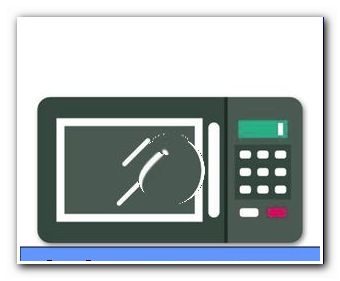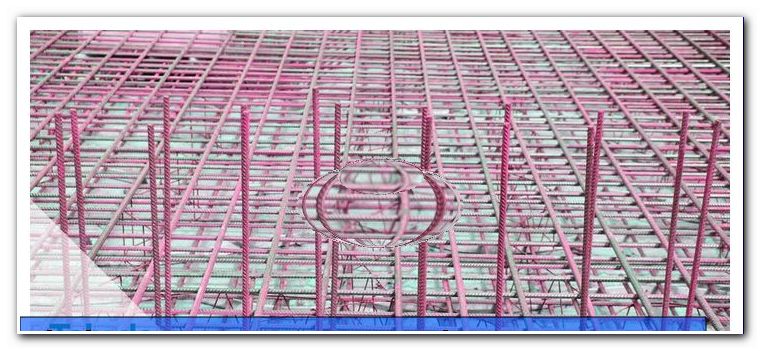Screw turned round: this is how you unfasten worn screws

- preparation
- Loosen the loosened screws
- rubber band
- Screw
Aligned screws. Everyone knows them, only very few people know how to solve them again. If the head of a screw is so worn that it can no longer be unscrewed with the appropriate tool, alternative methods must be used. Simple household items often suffice before you have to use a saw or an angle grinder.
Due to their principle, screws are among the most important fastening materials ever. They can simply be screwed in and out and will not damage the workpiece if properly executed. Nevertheless, it may come to wear due to excessive force or fatigue, which in turn makes the release extremely difficult. Once a screw has worn out, do not turn it further to avoid further damage to the head. How to minimize the effort of loosening the screws. There are several ways to loosen the screws, which vary depending on the degree of wear and the fit of the screws in the material.
preparation
Before you can take care of the screws, you must first pay attention to a few things. Above all, it is important that you do not try to loosen the screws with a regular screwdriver. This would sharpen the metal even more and have a negative effect on the stability of the screw head. Many people make the mistake of putting more pressure on the screws, which increases the wear even more. In addition, you should always first try out the variants that do not need a special tool, because often these are sufficient.
Loosen the loosened screws
rubber band
Believe it or not, a rubber band helps with this misery. The rubber band fills the screw head and protects the drive from further wear, which eliminates the problem. For this method you need a thick rubber band; Here are Einmachgummis, as they are used for preserving jars, proven effective. If you have one available, do the following:

- Take the rubber band and place it with the surface on the screw head
- do not place the rubber band in two layers on the screw head
- This would not grab the screwdriver
- fix the band with your fingers and place the tool directly on the screw head
- Now the rubber band should sit between the screwdriver and the drive
- If you try to use the screwdriver, the rubber band will grip the round ground head
- then loosen the screws

This method is suitable for all screw types, from Torx to Allen profiles. However, it should be noted that very thin slot profiles are somewhat more problematic to solve with this method. This is also true of all screw heads, which are severely worn and where the drive is already almost completely abraded. The clearer the profile of the screws, the easier the tape can grip.
Tip: As an alternative to the rubber band, you can also take some layers of cling film, which you can fold over and place over the head of the screw. If the screwdriver passes through the film, you simply need to use more layers and move the same way as the rubber bands.
Screw
Screw extractors are specially designed for loosening out worn screws, but must be previously purchased and used together with other tools. These are usually sets that have bits of different sizes for drills and drill an extra hole or thread into the head of the screw to subsequently loosen the screws. On average, these sets cost between 20 and 30 euros. In addition, you will need:
- Hand drill including twist drills that can be used in metal
- Tap wrench (only required for certain left-handers)
- grains
- hammer
- something to clamp the screws

2nd step: Now use the grains and hit a small hole in the middle of the screw head. If you have extractors that do not rely on the kernel, you do not need to do this step.
Step 3: Now select the appropriate twist drill and insert it in the drill. Insert the drill bit into the hole created by the punch and drill deeper to create the necessary thread for the left hand turnner. The size of the drill bit is selected using the left-hander bits. Usually every set contains information about the necessary sizes.
Step 4: Now clamp the required extractor bit into the tap wrench, place it in the hole and turn it counterclockwise. Once the extractor grabs, he will start to turn the screws out of the hole. It only takes a little force, but you have to keep the tap straight.
In the other variant, the sets have bits that drill a special thread in the screw head. Then the bit is rotated, put back into the drill and released on the special drive profile within a short time. In this variant, however, you must pay attention to the quality of the bits, otherwise the result will be only moderate.
Tip: this method is possible even with broken screws, only the break point must be ground beforehand, for which also goggles must be worn. After grinding the break, you can perform the procedure as described above.
Make a slotted screw with the angle grinder
A popular method for all home improvement is the use of the angle grinder. With this you can cut a slot in the screw head, which then allows loosening with a screwdriver. Here, however, you must make sure that the screws are large and stable enough. The cut must be made exactly in the center so that the screwdriver can grasp properly and must not be too deep. Proceed as follows:

- use a small angle grinder
- the bigger, the more difficult and dangerous the project becomes
- Be sure to put on protective goggles
- Tighten the screws and check that they are tight
- Then pick up the angle grinder and attach it to the screw head first
- Now carefully cut into the screw head at the lowest level and make a slot
- then you can loosen the screws with a flat-head screwdriver




